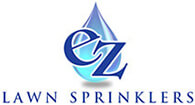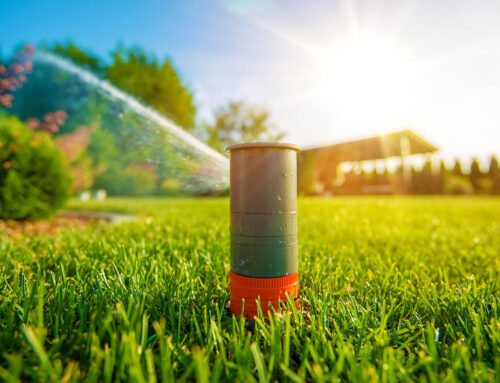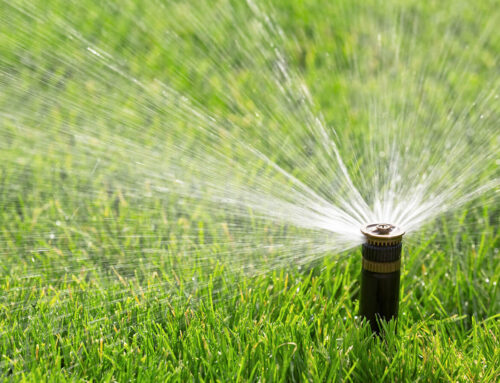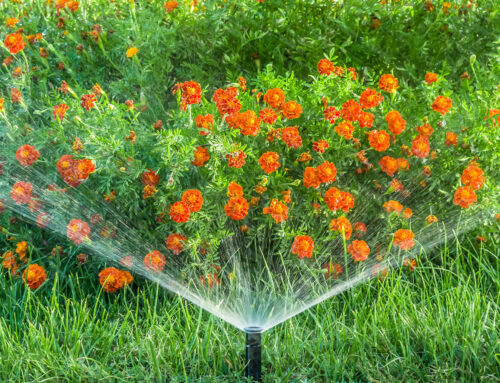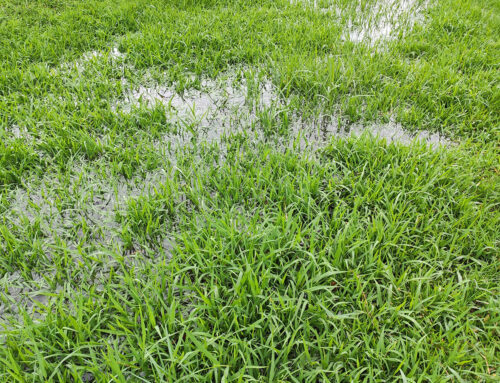Winterizing your sprinkler system may seem like a chore, but skipping it can lead to expensive repairs and serious landscape issues. According to a study, draining irrigation sprinklers at the end of each irrigation event prevents them from freezing, but rotational delay may interfere with proper water distribution (Gunn et al., 2011).
This means that while water removal protects against freeze damage, timing it correctly ensures each zone drains completely, preventing uneven watering patterns and potential damage across the system. Let’s look at what happens when winterization is neglected and why these steps are crucial for maintaining your irrigation setup.
Risk of Pipe Damage and Cracking
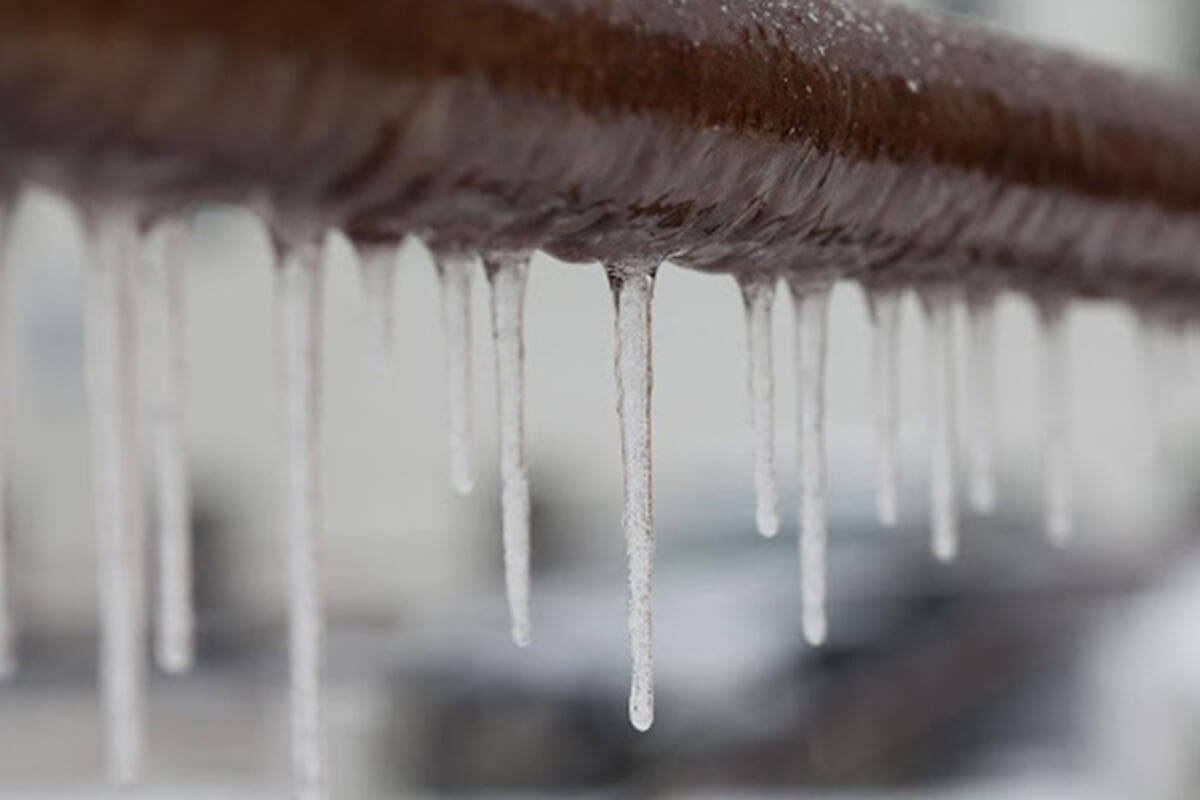
One of the most common and costly issues of skipping winterization is the risk of pipe damage. When water is left inside the system, freezing temperatures will cause it to expand, placing intense pressure on pipes, joints, and fittings.
This often results in cracked or burst pipes that can damage both visible and underground sections of the system. The worst part? These issues often go unnoticed until spring, when leaks emerge, and the irrigation system loses pressure. Repairing or replacing these damaged pipes is far more expensive than the preventive steps needed to winterize your system.
Damage to Valves and Sprinkler Heads
Valves and sprinkler heads are particularly vulnerable to freezing temperatures. When water is trapped inside these components, freezing conditions can cause them to crack, warp, or become permanently damaged.
Sprinkler heads, which are often positioned just below the soil surface, are especially susceptible to freezing since they lack the insulation that protects deeper components.
If damaged, these parts lose their precision in water distribution, resulting in uneven watering and inefficient performance. Replacing valves and sprinkler heads adds unnecessary repair costs that could be avoided by properly draining and winterizing the system.
Soil Saturation and Erosion Issues
Skipping winterization can lead to soil saturation and erosion around sprinkler lines and heads. When water left in the pipes freezes and expands, it can force water into the surrounding soil, creating pooling or uneven patches.
This soil saturation weakens the ground, making it more prone to erosion, especially in areas with sloped landscapes. In areas that rely on an efficient system, such as drip irrigation in Toronto, neglecting to drain these systems can cause soil destabilization and patchy landscapes.
These issues not only affect plant health but also create muddy, uneven surfaces that can persist well into spring.
Increased Water Bills and Energy Waste
Winter-damaged pipes or sprinkler heads will leak continuously, wasting water and causing your water bills to spike. Additionally, a compromised system often requires longer run times to achieve proper coverage, which further drives up water and energy costs.
This unnecessary waste not only impacts your budget but also has environmental consequences, as wasted water places added strain on local resources. Winterizing ensures your system remains efficient, conserving water and energy for a cost-effective start in spring.
Costly Repairs and Replacements
Neglecting winterization often results in costly repairs that could have been avoided. When frozen pipes crack or sprinkler heads break, repairs can quickly add up, with some needing full component replacements to restore proper function.
Underground pipes, which are expensive and labour-intensive to access, are particularly vulnerable to winter damage, as freezing water can cause fractures that disrupt the entire system.
In the worst cases, homeowners may even face the cost of replacing large portions of their sprinkler system. Compared to the affordable preventive steps of winterizing, these repairs are a significant expense that emphasizes the importance of seasonal maintenance.
Reduced Efficiency and Shortened Lifespan
Winter damage doesn’t just lead to immediate repairs; it also takes a toll on your sprinkler system’s overall efficiency and lifespan. Cracks in pipes, damaged valves, and misaligned sprinkler heads disrupt water distribution, resulting in dry patches or overwatered areas across your landscape.
Over time, these minor issues can compound, causing the system to work harder and wear out faster than it should. Eventually, a sprinkler system that isn’t regularly winterized will require a full replacement much sooner than one that receives proper seasonal care.
Taking the time to winterize your system helps it run smoothly and last longer, protecting your investment in the long run.
Disruption to Rain Sensors and Timers
Rain sensors and timers are vital for keeping sprinkler systems efficient and on schedule, but they are highly sensitive to moisture and temperature fluctuations.
Winter damage to the components will lead to malfunctions and throw off the system’s programmed schedule. This disruption can cause off-schedule watering, which wastes water and may even harm landscaping during times when irrigation isn’t needed.
By winterizing your sprinkler system, you’re not only protecting pipes and valves but also these critical electronic components. This preventive step ensures that rain sensors and timers are ready to operate accurately and efficiently when the warmer months return.
Professional Winterizing: Ensuring Comprehensive Protection
While some homeowners may attempt to winterize their sprinkler system on their own, hiring a professional offers thorough protection against winter damage. A certified technician brings specialized tools and expertise to safely drain every section of the system, including hard-to-reach valves, sprinkler heads, and underground pipes.
Professionals often use high-powered air compressors to blow out residual water, ensuring that even small amounts left in pipes or components don’t freeze and cause damage.
Professional winterizing services also include a detailed inspection of the system, identifying any existing issues that could worsen over the winter, such as small leaks or faulty valves. In areas with freezing winters, such as Toronto, these inspections are especially valuable for maintaining the longevity of complex systems like drip irrigation.
Hiring a professional ensures that your sprinkler system is fully protected, giving you peace of mind that it’s ready for efficient, problem-free operation in the spring.
Protect Your System and Save on Repairs This Winter
Winterizing your sprinkler system is a small step that can make a huge difference in protecting your investment and ensuring efficient operation when spring returns. Don’t let avoidable issues like pipe damage, malfunctioning sensors, or costly repairs sneak up on you next season.
Contact EZ Lawn Sprinklers (your trusted sprinkler system installer) for professional winterizing services. Call us today at (416) 580-3939 and secure the performance and longevity of your irrigation system, season after season.
